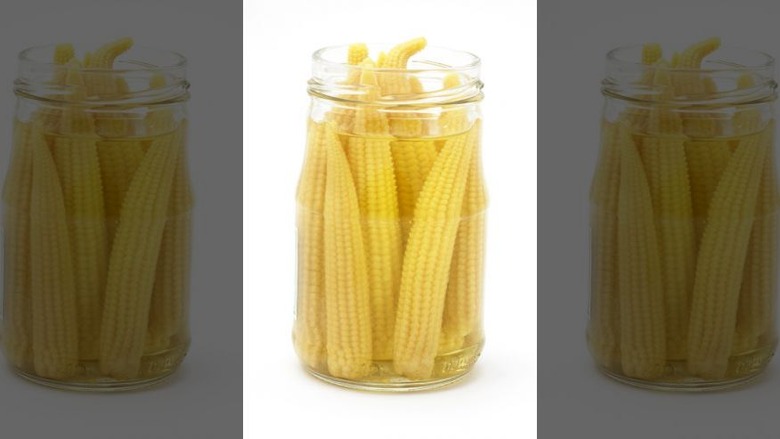The Truth About Baby Corn
s it a genetically modified ear of corn? An immature ear of corn? Some other maize-like vegetable that's been shrunk by culinary aliens?
Unlike baby carrots, which are whittled down to size by man or machine, baby corn is just an ear of corn before it's grown large, picked in late spring or early summer, before the stalk is fully grown. It's tender and easy to cook– but it hasn't hit the mainstream because it's burdensome to harvest.
Baby corn is harvested, usually by hand, as soon as the corn silk begins peeking out. Thailand is the primary producer, but it is also grown in India and Kenya.
"Baby corn has a different texture, more of a snap to it," says Cara Hermanson, chef at Tarallucci E Vino in New York City, who uses baby corn in her seasonal restaurant specials.
"Canned baby corn is cooked a little bit, so instead of having these layers of slightly sweet and earthy and very vegetal, it tastes like the liquid. It's crunchy but mushy at the same time. It doesn't have the snap, the crunch and the life that fresh corn has."
It's a fun vegetable. And let's face it — it's pretty cute, as far as vegetables go. It's also pretty versatile. You can eat it raw or cooked, or you can pop the whole thing, cob and all, into your mouth.
But does it offer the same nutritional value as regular corn? Not really.
"Because it's only picked a couple days before the corn is mature, there's not as much time for the minerals and nutrients to become as nutrient dense," says Los Angeles-based nutritionist Shira Lenchewski.
But it does have an upside. "At the same time, there's less sugar," Lenchewski says. "It's interesting, because there's less minerals and nutrients, but also less sugar."
Since fresh baby corn isn't always available, manufacturers often load it up with salt and preservatives, further negating any potential health benefits.
"Because you really can't find it anywhere close to here, it winds up being shipped, probably in a plane, and it's being canned. It's definitely not healthier than regular corn," Lenchewski says.
Where Can I Eat It?
Baby corn doesn't have the cachet of a superfood darling like kale, but it's cropping up on trendy menus. "People just don't sell it," says Simpson Wong, chef at Chomp Chomp in New York. "In middle America there's so much corn, honestly, I think that they don't know how to use it."
Top Chef alum Marcel Vigneron loves baby corn and uses it in a dish playfully called UniCorn Bone Marrow at the LA hotspot Wolf. "I like to use baby vegetables," Vigneron says, "because they work with tasting menus and small courses, and they have really nice flavor ... and appealing texture. It's not as sweet and starchy as full grown corn. It's not super sugary. It's a little more vegetal." He also uses it in one of his featured dishes, Corned Beef.
"I made my own pastrami and served it with baby corn," he said. "It's a play on words. Corned beef ... get it?"
But for now, it's found mostly in stir fries, peeking out of your Thai noodles and in some Indian dishes, like baby corn masala. Baby corn doesn't have a lot of taste, but boasts plenty nooks and crannies for sauces, the same way a pasta like rigatoni is great for picking up meat sauce.
Can I cook it at home?
You can if you can find it, and there's a good chance you will at an Asian market. If the canned version is all you can find, drain the baby corn and dry it well.
Making a stir-fry is a simple way to incorporate it, but how about tossing a handful into a batch of chowder or salad? Roasting baby corn really brings out its sweet flavor, and it's a cinch.
You can also enjoy it raw. It's like snacking on a carrot stick, but much cooler.
This article was originally published on July 18, 2016 by Lauren Bloomberg
Related:
- The best restaurants in Philadelphia
- Italian restaurant sees surge in business after posting controversial 'Black Olives Matter' sign
- Internet bashes Trump's vice presidential pick Mike Pence for eating at Chili's
- Disneyland closing iconic 'Tower of Terror' ride, Internet meltdown ensues
- How to dive with sharks- and not get eaten
